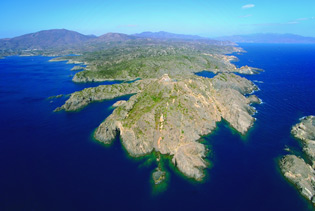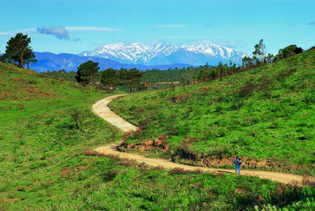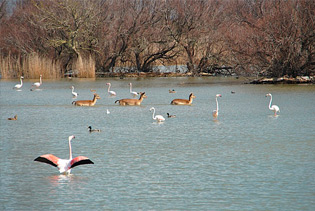
Nature Park Cap de Creus
The peninsula of Cap de Creus is one of the largest parks of Catalonia. The Natural Park of Cap de Creus is one of the first parks, which has a reserve in the water, and on the land. with a total area of 13,886 hectare property, which is divided into 3073 hectares of water and 10,813 hectares of land area.
In the natural park there are two different terrestrial areas:
- The tip of the Cap de Creus (Lighthouse of Cap de Creus, where the movie “The Light at the Edge of the World” by Kevin Billington was filmed)
- Cap Norfeu, has an exceptional geological and biological environment, there have been discovered recently traces of volcanic activity that occurred 10 million years ago.
The water surface is divided into 3 zones:
- El cabo Gros
- The tip of the Cap de Creus
- Cap Norfeu
Nature lovers can observe there a wide variety of flora and fauna.

Nature Park Albera
The nature reserve Albera is a park with a large national interest, although the park is not part of the municipality of Roses, it is easy to reach on foot.
The nature park is divided into 2 areas:
- The West, has an important forest area and a large variety of upland vegetation. Typical of humid environments is the holly (Ilex aquifolium), the European yew (Taxus baccata) and numerous orchids.
- In the second zone, which is dryer is under Sant Quirze of Cholera, clearly dominate with the shrubs (brota mediterránea), the Aulaga negra (Calicotome spinosa) and the Jaras (Cistus sp.).
The fauna from the Natural Park Albera rises particularly attention to the Mediterranean tortoise (Testudo hermanni). This turtle was settled a few years ago.

Nature Park Aiguamolls de l’Empordà
The nature park Aiguamolls de l’Empordà, was declared 1976 as a protected zone. As a protection against the obstruction of the area.
The nature park is divided into 3 zones:
- Theareaof the ponds. (The largest areas made of reeds, bulrushes and wetlands).
- The zone of dunes. (The zone consists of lagoons and brackish marshes and dunes).
- The area of the island “Caramany”. (The island is located in the center of Fluvià, this island is preferred by many birds as a nesting site).
Most of the flora of this park is located in the zone of the half-flooded or are completely flooded wetlands so-called.
There are plants typical of this area such as the Salicornas (Athrocnemum), the beach grass (Ammophila arenaria), which you will find on the dunes next to the beach and the yellow lily (Iris pseudacorus).
At last we must not forget the numerous fauna that has setteld in the nature park. Such as the otter (Lutra lutra) and the stork (Ciconia ciconia). Furthermore, there are types that have been successfully introduced some years ago, such as the fish Espinoso (Gasterosters aculeatus) and the fish Afanio (Aphanius iberus). These two fish are very characteristic of these waters and the area.




